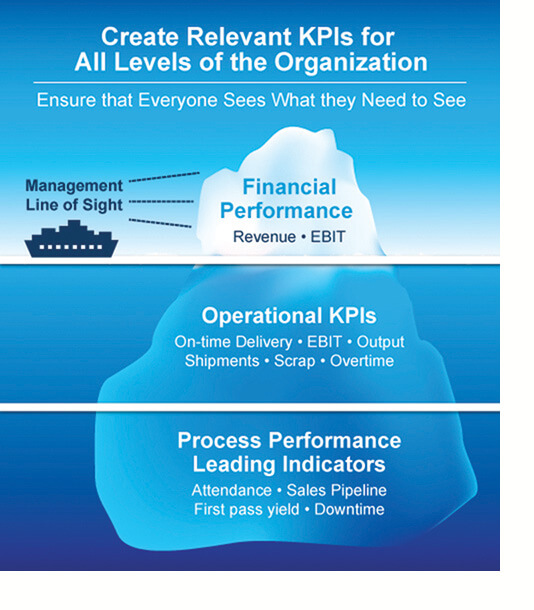Does Everyone Really Know if their KPI Metrics Are Effective?
As a business leader you spend a lot of your time figuring out how to win with good reason. The most crucial job of every executive is to align efforts at every level of the organization to deliver wins for the week, for the quarter, and for the year.
The people at the front end of the business—the sales people, the customer service reps, the machine operators, warehouse staff and IT specialists—they work deep inside everyday business processes. They often have no idea if they are winning, or what the score is, let alone how their actions impact the company’s overall success. Failure to make such connections can dramatically affect the entire business's performance.
Without support from the front lines, no top-level plan has a chance. That’s why you need to have a structured process for communicating current performance in ways that empower everyone to strive for wins every day. That process, like so much else today, begins with data.

The Right Data for the Right Job
We all love our metrics. We love to show off our progress. You may have performance boards displaying safety, quality, delivery, cost and other key metrics all over your factory. But just reporting today’s status or progress isn't enough. You have to make sure that the key performance indicators (KPIs) everyone is focusing on will drive future success. Look closely at your performance boards. Are the KPIs leading or lagging indicators? Are they predictors of overall process and business performance, or are they just reporting what’s happened at the end of the shift like a box score in the newspaper? Do the numbers that you call out and discuss with employees make it easy for them to identify and work on the immediate priorities of the business?
In other words, do the metrics encourage everyone to look at their processes, at what they’re doing today, and consider what they need to do in order to win at the end of the day, the week or month? Do the KPIs tell them that they’re ahead or behind?
Having the Right Conversations
What exactly happens around the performance boards in your morning huddles and daily management meetings? You should be focusing most of your attention on current issues on the floor, about the challenges you are facing and how you are going to address them. The numbers start the conversation, but getting too hung up on them can become a rote and pointless metrics tally.
You need to talk about each process. Discuss why the line was down for 10 minutes yesterday, for example, and what was the true root cause and what needs to be done to prevent it from happening again. Part of this comes down to hiring and training. You need to develop leaders with problem-solving skills and a process-oriented focus who can translate the KPIs and performance reports into meaningful actions.
You have to develop people who will look at each process and help others see what is really going on, and then work with their teams to leverage that insight into daily victories. Focusing on active, leading indicators transforms performance boards from passive data logs into motivational scoreboards that will keep every area of the organization aligned with high-level goals and drive future wins. When companies get their KPIs and review processes right, it flips most of the day-to-day decision-making away from upper managers and gives front-line workers the feedback they need to take responsibility for winning every day.


